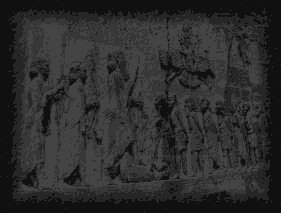 |
||||||||||||||
 |
||||||||||||||
 |
||||||||||||||
|
|
||||||||||||||
 |
Known as the home of the original oriental carpet, Iran (Persia) the oldest and once most powerful empire in the Middle East, stood at the crossroads of Eastern and Western civilizations. Weaving flourished to exceptional heights through the Safavid Dynasty (1502-1736). From having been created out of need by nomadic tribes people, Persian carpets became treasured heirlooms passed on from one generation to the next. Exporting of Persian carpets began in the 16th century. Under Reza Shah Pahlavi, royal factories were established to utilize the finest materials and methods of manufacture. It didn't take long for other countries to appreciate the quality of a Persian carpet. Royal households throughout the West sought some of the finest examples for themselves. |
|||||||||||||
|
Persian carpets and rugs have always been and still are an intrinsic part of Iranian culture and its people's daily lives. Indeed, carpets and rugs are in many cases the most valued possessions, and they are an integral part of an Iranian home. Persian carpets continue to boast very high quality standards and command a very brisk interest in domestic and international markets. While large city workshops were an important factor in the past, much of today's production is fashioned along cottage industry lines in smaller villages and towns. Wherever the carpet or rug is made, a genuine Persian carpet is hand-made. Even when a team of craftsmen work on a single piece it can still take many months, years even, to complete. The dyes used to create the colouring are all from plants, roots and other natural substances. Subtle variations in the same colour sometimes occur, particularly in older carpets or those woven by nomadic tribes. Persian carpets are traditionally known for their tremendous variety in design, colour, size, and weave. Moreover, they are known for the uniqueness of each and every rug produced. Rugs are generally named after the village, town or district where they are woven or collected, or by the weaving tribe in the case of nomadic pieces. Each rug's particular pattern, palette, and weave are uniquely linked with the indigenous culture, and weaving techniques are specific to an identifiable geographic area or nomadic tribe. |
||||||||||||||
|
Development by: HPRmedia
Ltd
All Content © Copyright 2000 Persian Rug Bazaar |
||||||||||||||